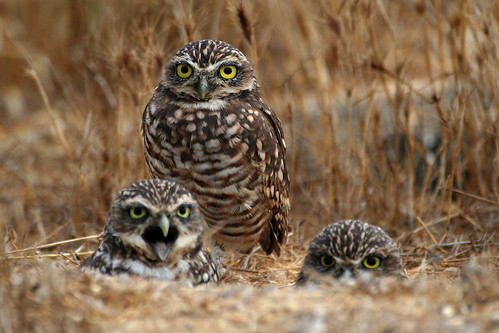Burrowed Time

The Burrowing Owl is the second owl that we've added to Birdorable this week. These little cuties are about the size of an American Robin. They like to hang out underground in burrows that were dug out by small mammals like prairie dogs and ground squirrels. Burrowing Owls appear to be diurnal as you can often see them foraging during the day, but they actually hunt all day and night long, although they tend to avoid the mid-day heat. In the United States Burrowing Owls are distributed from the Mississippi west to the Pacific and you can also find them in Florida and the Carribean Islands. They live in dry open areas with low vegetation.





Comments
Leave a comment
Thank you!